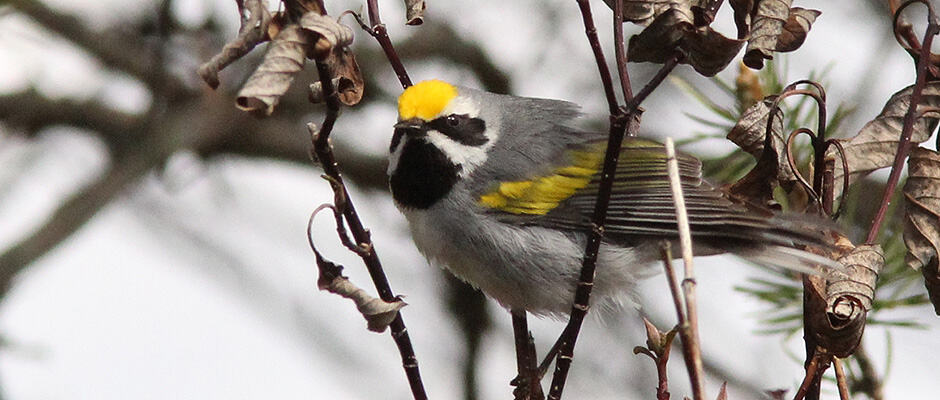Share this article
Fleeing Birds Sense Distant Tornadoes
Hold on to your ruby red slippers, Dorothy. Mother Nature may have her own tornado-warning system. Just days before a series of tornadoes hit the Central and Southern United States this past April, five small, neotropical birds showed some strange behavior. Golden-winged warblers (Verminvora chrysoptera), from a population that winters in Eastern Colombia, South America, and summers in the Cumberland Mountains of Eastern Tennessee, vacated their summer breeding territories in what researchers believe may have been anticipation of a major storm brewing hundreds of miles away and moving in their direction, according to a study published online in Current Biology.
“At the same time that meteorologists on the Weather Channel were telling us this storm was headed in our direction, the birds were apparently already packing their bags and evacuating the area,” said Henry Streby of the University of California, Berkley in a statement. In May, 2013, Streby and a team of researchers tagged 20 male golden-winged warblers with light-level geolocators—an electronic, tracking device that measures changes in light levels as a terrestrial animal migrates north or south or marine animals dive between shallow and deep waters. The researchers wanted to see if the small bird could carry the device for a year. Gold-winged warblers weigh about a third of an ounce, the heft of approximately four dimes, and the trackers weigh about five percent of their body weight.
Earlier this year, the team returned to recover the geolocators. On April 28, 2014, about a week after thier arrival in Tennessee, a sever thunderstorm system, called a supercell, swept through the survey area around 11 pm. Supercells sometimes give rise to tornadoes, and this particular storm system generated 84 confirmed tornadoes and caused at least 35 human fatalities. Afterward, the team recovered five warblers with geolocators.
The data showed that these warblers had evacuated their breeding grounds a day or two before the supercell hit, when the storm was 250-550 miles away. Additionally, the warblers appeared to fly around the supercell, taking different routes from one another. Three of the birds travelled more than 900 miles round-trip. “It is the first time we’ve documented this type of storm-avoidance behavior in birds during breeding season,” Streby said, though what exactly cued the birds to leave remains a mystery. When the birds left, local weather conditions were normal.
The researchers believe the birds could hear rumblings of the storm before it arrived. Tornadoes produce strong low-frequency sounds, called infrasounds, occurring at frequencies below the normal range of human hearing. According to the National Institutes of Health, humans can normally hear sounds from 20-20,000 hertz. Because lower frequencies travel farther, the infrasonic sound resonating from the supercell storm system could have gone hundreds to thousands of miles before petering out. This means it is possible that the warblers could hear the storm coming from only a couple of hundred miles away days before it passed through their breeding grounds.
“Biologists had not been looking at the use of infrasound in this way, but it certainly makes sense to me,” said Streby. “We may find that acoustics are a pretty significant way that birds in general view their environment, much like dogs use olfaction and humans use sight.”
Header Image: Image Credit: Caleb Putnam








